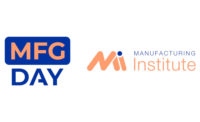MCLEAN, VA-September U.S. manufacturing technology orders put the year-to-date total at approximately $4 billion , which is up 91.9% compared with 2010 and are the second highest dollar amount in the last 15 years.
“It’s long been recognized that analysis of manufacturing technology orders provides a reliable leading economic indicator, as it is an indicator that manufacturing firms are investing in capital equipment to increase their capacity and improve productivity,” says Patrick McGibbon, vice president, strategic information, research and membership for The Association for Manufacturing Technology (AMT). “Manufacturing technology provides a foundation for all other manufacturing. These machines and devices are the equipment that turn raw materials such as steel, iron, plastic, ceramics, composites, and alloys from their original state as stock materials into what will become durable goods such as airplanes, cars and appliances, as well as consumer and other goods that are used every day.”
The Midwest and Central regions of the United States have seen the greatest surge in manufacturing technology orders. The Midwest’s manufacturing technology orders in 2011 are 120% more than the comparable figure for 2010. This large increase is the result of the region’s large traditional customer base. It is also where the oldest equipment resides and the industries impacted most by the weak dollar and on-shoring trend are located. The Central region pick-up - 92% higher compared to 2010 - was powered by the growth in the energy business and secondly by the automotive industry.
“The factors that are fueling this tremendous surge are the traditional reasons that drive growth in investment, but what is unusual about the current rebound is that all factors have come together at one time. This is something that’s never been seen before,” McGibbon notes.
“American manufacturers are still rushing to beat the end-of-year bonus depreciation deadline,” he continues. “Inventories were low-something we’ve never experienced going into a recession-and that accounts for the quick rebound. Exports are rising as American manufacturers meet overseas demand. Manufacturing technology from the United States is less expensive than foreign equipment, and U.S.-made goods are more price competitive than many imports due to the weak dollar.”
The average age of machinery currently in use at U.S. manufacturing facilities crept up from nine years in 2007 to 13.5 years, and as demand started to increase the need for investment to replace the aging equipment became apparent. Those investments are being made in completely new technology. Multi-operation machines are profoundly impacting productivity. Water jet cutting and hydroforming are experiencing massive growth because they offer all the benefits of traditional processes but eliminate distortion and deformation. Additive manufacturing is growing, nano machining has become commercially affordable, and the availability of new materials, such as compact powdered metals, is having a tremendous impact. Plus, the emergence of cloud manufacturing, which promotes collaborative efforts across organizations, is opening new doors to manufacturers.
Expanding markets worldwide are playing an important role as manufacturing grows. China seems insatiable and accounts for almost one half of the world’s total consumption of manufacturing technology. India’s economy is growing at double the Western economy’s rate, with expectations for more China-like development soon. As it prepares for major world events including the Olympics and the FIFA World Cup competition, South America faces the challenge of building infrastructure that can support the events.
Russia, South Africa, the Middle East and South Asia are on the fringe, but nevertheless contribute to growth in the global manufacturing economy.
Another factor boosting U.S. manufacturing is the onshoring phenomenon. More work is coming back to the U.S. from foreign shores and there is greater foreign direct investment in U.S. facilities. Why? The quality of work in the United States is proving to be more valuable than originally thought in the off-shoring investment calculation. Companies face increasing costs in logistics issues with the delivery of components and the exporting of completed products to North America. Add to that the rapidly increasing labor costs in traditionally “low-cost” labor markets, and the continued decline of labor in the overall share of total production cost, and the on-shoring picture becomes clear.
The outlook for 2012 remains positive. Energy will continue to be a large investor in manufacturing technology. The automotive industry is making major changes to address green issues, which will lead to significant investments in production technology, as well as spending to support the shift of the industry’s center from Detroit to the South/Southwest. Aerospace green field investments will continue in the Southeast and West.
All this sets the stage for an important manufacturing event sponsored by AMT - the 29th edition of IMTS (the International Manufacturing Technology Show), which will be held September 10-15, 2012, at Chicago’s McCormick Place. IMTS is important because it provides the unparalleled opportunity for manufacturers and customers to come together under one roof for the largest manufacturing trade show in the Western Hemisphere.
The show theme for 2012 is “Be There” and is a call to action for the more than 82,000 industrial decision makers from more than 106 countries who will attend IMTS to get ideas and find answers to their manufacturing problems and challenges, but most importantly, to stay ahead of the competition.
Early results on participating exhibitors and exhibit floor square footage contracted, which are both ahead of the 2010 pace, reflect the strong resurgence of manufacturing.
To learn more about IMTS 2012, visitwww.IMTS.com .
Manufacturing Technology Demand Strong Amid Other Economic Weakness
Looking for a reprint of this article?
From high-res PDFs to custom plaques, order your copy today!



